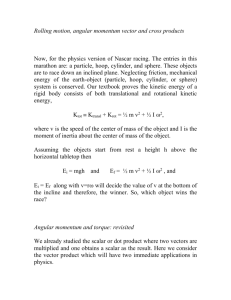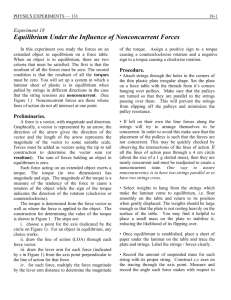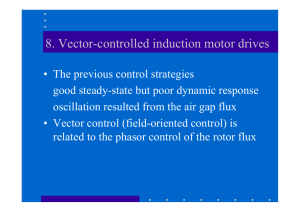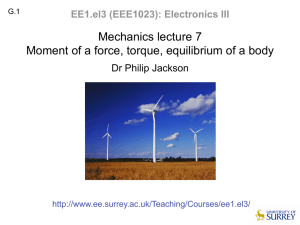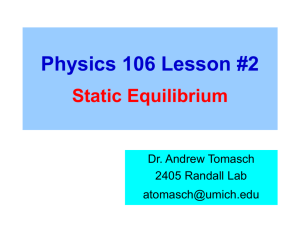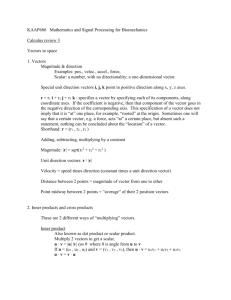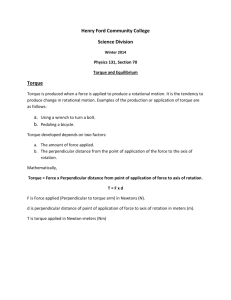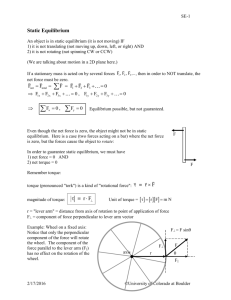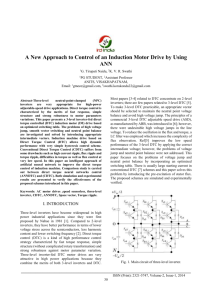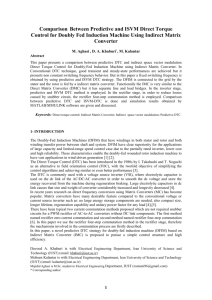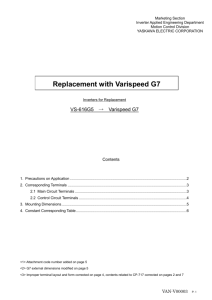Static Equilibrium Lab - University of Michigan SharePoint Portal
advertisement
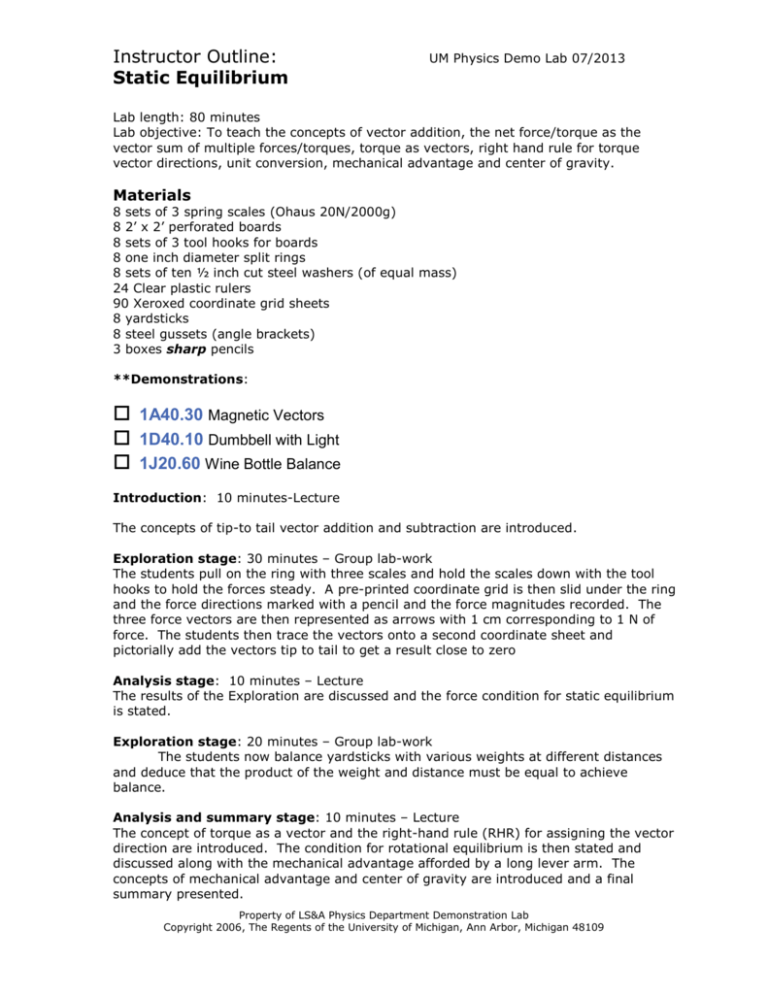
Instructor Outline: Static Equilibrium UM Physics Demo Lab 07/2013 Lab length: 80 minutes Lab objective: To teach the concepts of vector addition, the net force/torque as the vector sum of multiple forces/torques, torque as vectors, right hand rule for torque vector directions, unit conversion, mechanical advantage and center of gravity. Materials 8 sets of 3 spring scales (Ohaus 20N/2000g) 8 2’ x 2’ perforated boards 8 sets of 3 tool hooks for boards 8 one inch diameter split rings 8 sets of ten ½ inch cut steel washers (of equal mass) 24 Clear plastic rulers 90 Xeroxed coordinate grid sheets 8 yardsticks 8 steel gussets (angle brackets) 3 boxes sharp pencils **Demonstrations: 1A40.30 Magnetic Vectors 1D40.10 Dumbbell with Light 1J20.60 Wine Bottle Balance Introduction: 10 minutes-Lecture The concepts of tip-to tail vector addition and subtraction are introduced. Exploration stage: 30 minutes – Group lab-work The students pull on the ring with three scales and hold the scales down with the tool hooks to hold the forces steady. A pre-printed coordinate grid is then slid under the ring and the force directions marked with a pencil and the force magnitudes recorded. The three force vectors are then represented as arrows with 1 cm corresponding to 1 N of force. The students then trace the vectors onto a second coordinate sheet and pictorially add the vectors tip to tail to get a result close to zero Analysis stage: 10 minutes – Lecture The results of the Exploration are discussed and the force condition for static equilibrium is stated. Exploration stage: 20 minutes – Group lab-work The students now balance yardsticks with various weights at different distances and deduce that the product of the weight and distance must be equal to achieve balance. Analysis and summary stage: 10 minutes – Lecture The concept of torque as a vector and the right-hand rule (RHR) for assigning the vector direction are introduced. The condition for rotational equilibrium is then stated and discussed along with the mechanical advantage afforded by a long lever arm. The concepts of mechanical advantage and center of gravity are introduced and a final summary presented. Property of LS&A Physics Department Demonstration Lab Copyright 2006, The Regents of the University of Michigan, Ann Arbor, Michigan 48109 Concepts developed: 1. Vector addition and subtraction. 2. Torque as a vector and the RHR for assigning direction. 3. Net force/net torque as the vector sum of individual forces/torques. 4. Condition for linear and rotational static equilibrium. 5. Mechanical advantage. 6. Center of mass and center of gravity. Property of LS&A Physics Department Demonstration Lab Copyright 2006, The Regents of the University of Michigan, Ann Arbor, Michigan 48109



